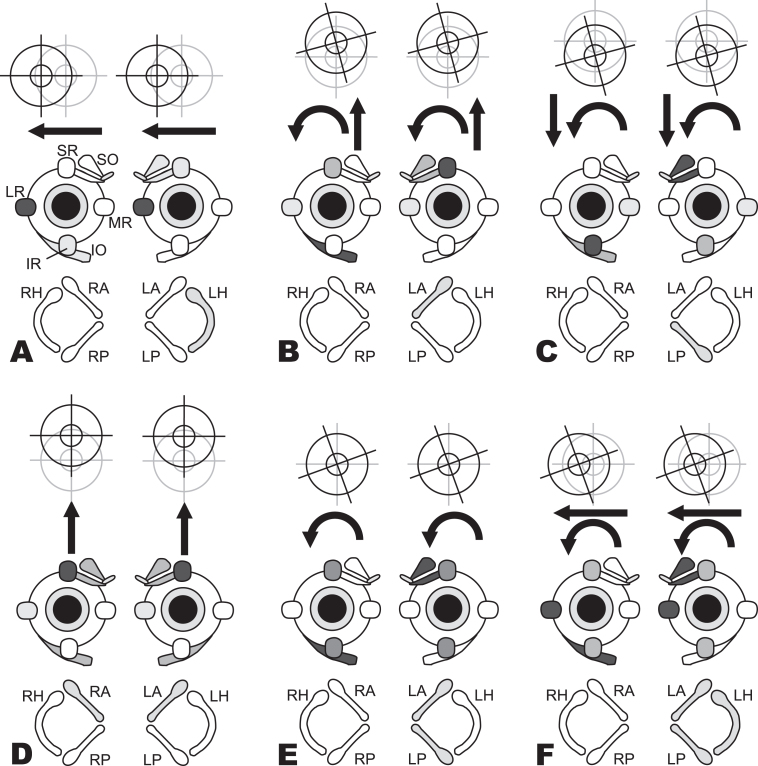Fig.3.
Nystagmus slow phases observed for excitation of individual semicircular canals. In the bottom row of each panel (A through F), shading indicates the excited canals. In the second row, a diagram of the extraocular muscles depicts which muscles are activated (darker shading indicates stronger activation). In the top row, the resultant yaw, pitch, and/or roll eye movements are indicated. (A) Excitation of the left horizontal (LH) canal causes rightward slow phases mainly as a result of strong activation of right lateral rectus (LR) and left medial rectus (MR). (B) Excitation of the left anterior (LA) canal causes upward/clockwise (from patient’s perspective) slow phase because of the combined action of the right inferior oblique (IO) and superior rectus (SR) and the left superior oblique (SO) and SR. (C) Excitation of the left posterior (LP) canal causes downward/clockwise (from patient’s perspective) slow phases as a result of the combined action of the right IO and inferior rectus (IR) and the left SO and IR. (D) Combined equal excitation of both the left anterior (LA) and right anterior (RA) canals activates bilateral SR and oblique muscles and causes purely upward slow phases since the torsional components from each canal cancel each other. (E) Combined equal excitation of left anterior (LA) and left posterior (LP) canals excites muscle activity that is the sum of each canal’s individual effect; upward and downward pulls cancel, which results in a purely torsional nystagmus. (F) Combined equal excitation of all three left canals causes a right-clockwise (from patient’s perspective) slow phase, the expected result of summing activity for each individual canal. (Modified from Cohen et al [37]; adapted from Cummings Otolaryngology: Head and Neck Surgery. Flint, Haughey (eds.). Sixth edition [61]. Chapter 163: Principles of applied vestibular physiology. Carey JP, Della Santina CC. ISBN: 978-1-4557-4696-5. Data adjusted to human head frame of reference.)

